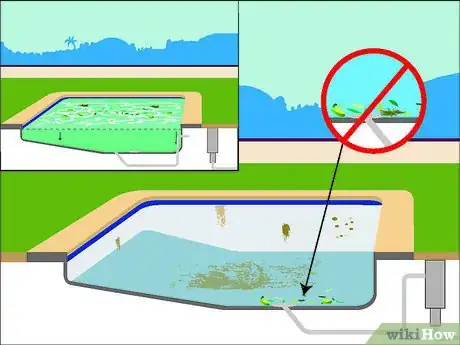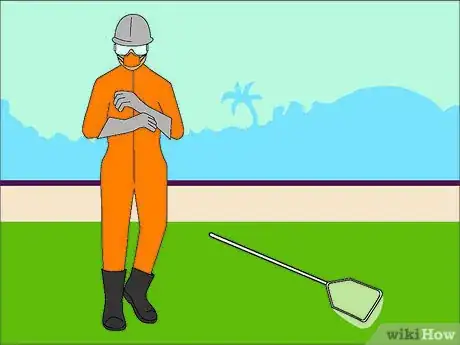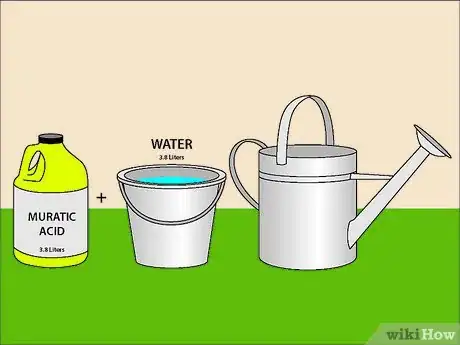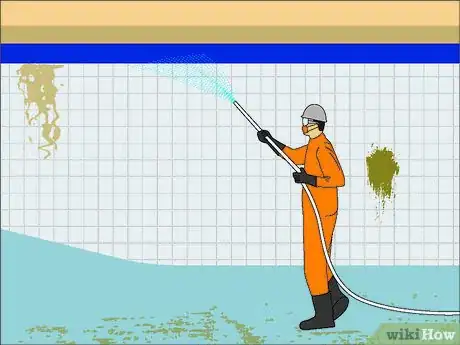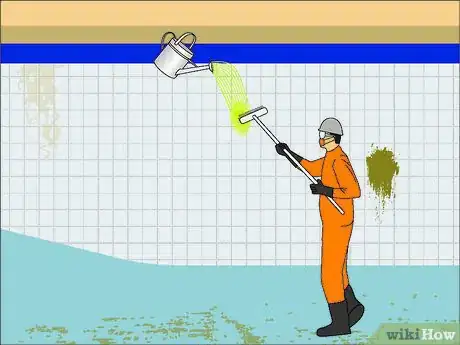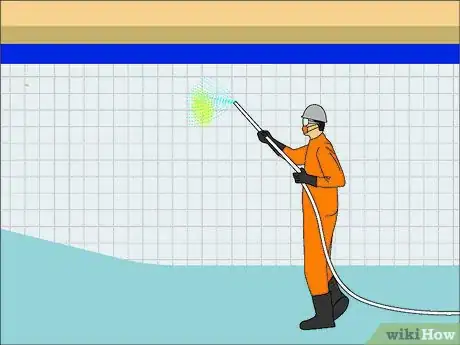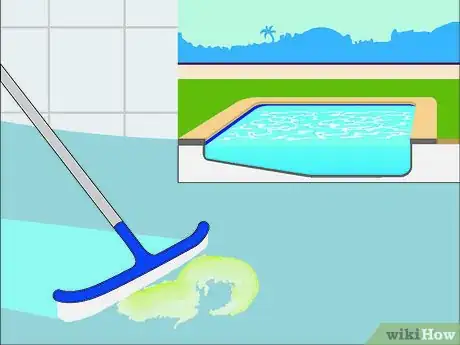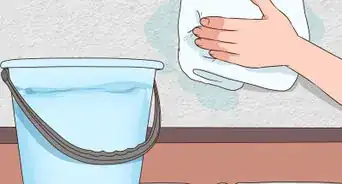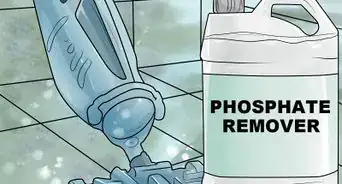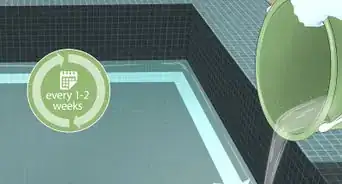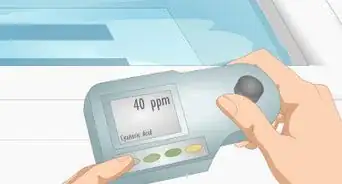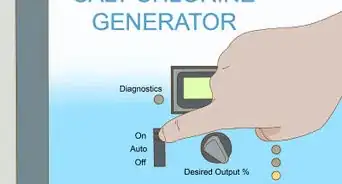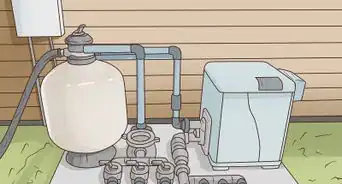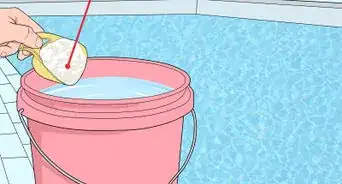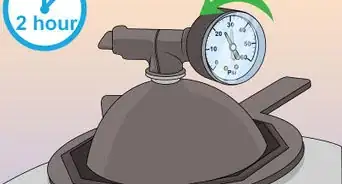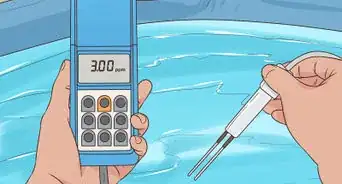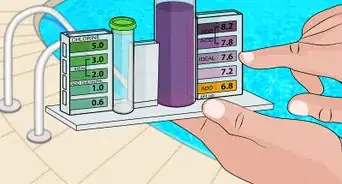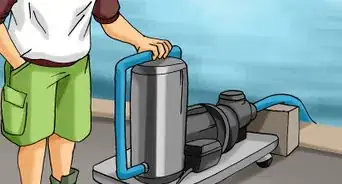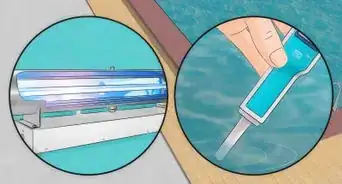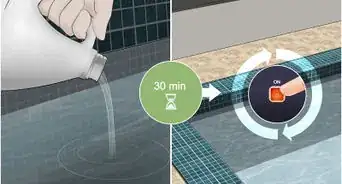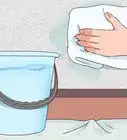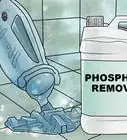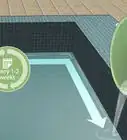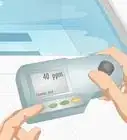wikiHow is a “wiki,” similar to Wikipedia, which means that many of our articles are co-written by multiple authors. To create this article, 9 people, some anonymous, worked to edit and improve it over time.
wikiHow marks an article as reader-approved once it receives enough positive feedback. In this case, 95% of readers who voted found the article helpful, earning it our reader-approved status.
This article has been viewed 187,094 times.
Learn more...
Whether your pool looks like a swamp, or you just want a fresh, clean-looking appearance, acid-washing your swimming pool can help. Also called "drain and clean," pools need this type of cleaning when winterizing the pool isn't done correctly, or algae has taken over due to the pool not being used or maintained in a while. The acid-wash process essentially strips the top layer of plaster to reveal fresh plaster beneath, so it's not recommended to do it often. But once in a while is a great idea!
Steps
-
1Drain your pool completely. As you drain, make sure to clean up any debris as you go. If your pool has an autofill, you should make sure that you turn it off during the drain. Once your pool is completely empty, start the acid-wash process.[1]
-
2Change into protective gear that includes clothing, goggles, mask, gloves and boots.[2]Advertisement
-
3Mix 1 gallon (3.8 liters) of acid with 1 gallon (3.8 liters) of water in a watering can. Acid must be added to the water and not the other way around.[3]
-
4Wet down one of the walls with the hose. The hose should not have a nozzle and water should be running from the hose at all times.[4]
-
5Pour the acid mixture on the wall from top to bottom in 10-foot (300 cm) sections at a time, leaving the acid on the plaster for about 30 seconds. During this time, you should be scrubbing the wall with a brush.
-
6Rinse the section you just acid-washed quickly and thoroughly.[5] Before moving to the next section, make sure you rinse the wall well so the acid doesn't continue to eat the plaster.
-
7Neutralize the pool after the acid-wash is complete. The acid-washing process leaves a foamy puddle of residue on the bottom of the pool that must be removed before it damages the plaster.
- Apply soda ash to the acid puddle, scrubbing the mixture with a pool brush. You will need to use 2 lb. (.9 kg) of soda ash per 1 gallon (3.8 liters) of acid.
- Pump the mixture into a bowl using a submersible pump.
- Dispose of what you pumped, as the acid can kill frogs, fish and plants. Rinse out the bowl.
- Pour water over any remaining residue, rinsing carefully around the drain.
Community Q&A
-
QuestionI poured acid before disposing the water in the pool. What must I do now?
 Uthra BalakrishnaCommunity AnswerQuickly drain it off. The acid will be stuck on the walls. Clean it and pour the water.
Uthra BalakrishnaCommunity AnswerQuickly drain it off. The acid will be stuck on the walls. Clean it and pour the water. -
QuestionFor how long I should wait to enter the pool after I put acid?
 Community AnswerDepending on how much acid you added and if your filter is moving the water rapidly about a hour, check with your test kit (phenol red), it will let you know the acid level. I add a bit less than calculated and then adjust further in small doses, that saves money. Note: you should retest next day as some cement/concrete pools react with acid causing a small pH bounce.
Community AnswerDepending on how much acid you added and if your filter is moving the water rapidly about a hour, check with your test kit (phenol red), it will let you know the acid level. I add a bit less than calculated and then adjust further in small doses, that saves money. Note: you should retest next day as some cement/concrete pools react with acid causing a small pH bounce. -
QuestionHow can you tell if the acid is working?
 Community AnswerIf the dirt disappears, it's working.
Community AnswerIf the dirt disappears, it's working.
Warnings
- Work carefully around the acid. Wear protective clothing, transport the acid safely by securing it in the vehicle, rinse off after you've finished acid-washing the pool, and have at least one other person working with you.⧼thumbs_response⧽
- If the acid is not rinsed completely, it will continue to etch the plaster. Be careful not to allow the acid to run from the shallow end to the deep end as it will create an etched path on the pool floor.⧼thumbs_response⧽
- The acid-washing technique should never be used on a vinyl-lined pool. Detergents and conditioners work best for this type of pool.⧼thumbs_response⧽
Things You'll Need
- Garden hose with no nozzle
- Protective clothing
- Gloves
- Mask
- Goggles
- Old boots
- Acid
- Watering can
- Pool brush
- Soda ash
- Submersible pump
- Bowl
